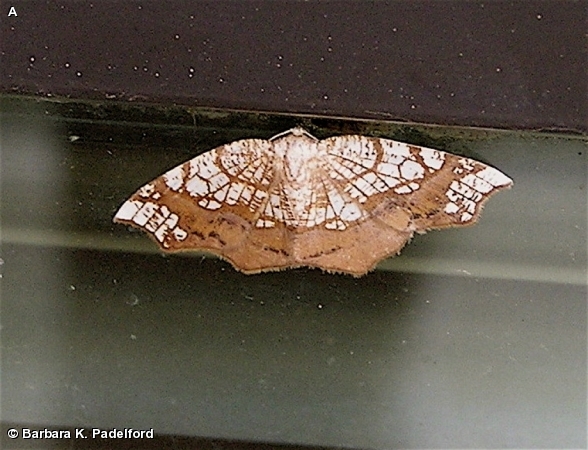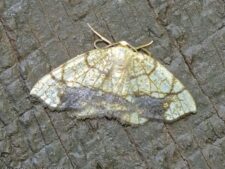
This small moth has a wingspan of 3/4 to 1inch. The male and female are sexually dimorphic with the female being more angular and having more dark brown markings on a white background. She has a web of fine brown markings dorsally on the leading edge of the forewing and hindwing, and solid brown marks on the outer margins of the forewing and hindwing. The male has more rounded wings and a more yellowish coloration. Because the larva has filament-like tentacles on the dorsal surface that can be extended when alarmed, the larva is known as The Filament Bearer. The larva is mottled brown, gray and white, and at maturity is 3/4” in length.
This moth is probably uncommon from May through August. The one pictured here was photographed in late June at the Fontenelle Nature Center.
This moth was formerly called N. limbata. The larval food plants are many hardwoods including oak, elm, dogwood, hawthorn, ironwood, hickory and willow.
Disclaimer: The content of NatureSearch is provided by dedicated volunteer Naturalists of Fontenelle Forest who strive to provide the most accurate information available. Contributors of the images retain their copyrights. The point of contact for this page is: Loren Padelford.

